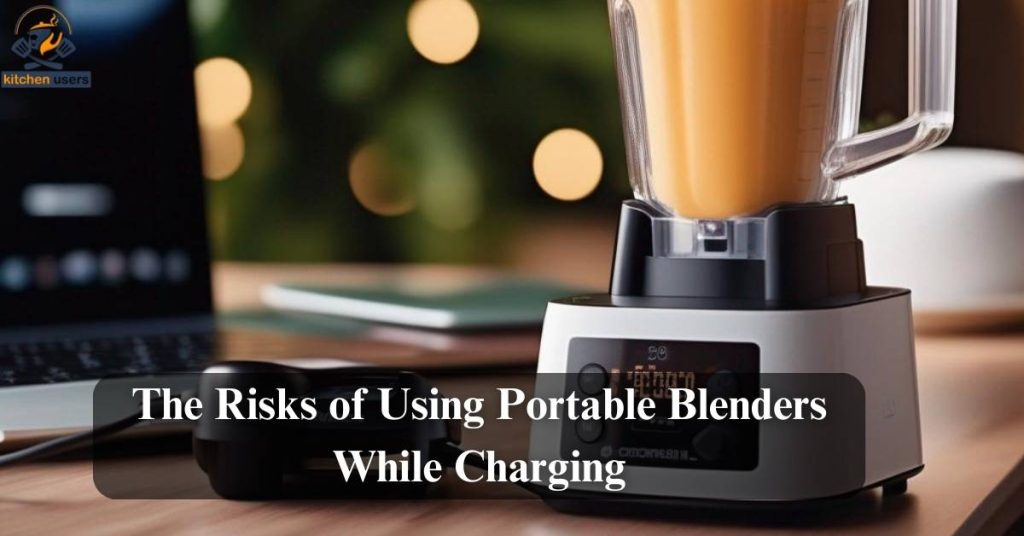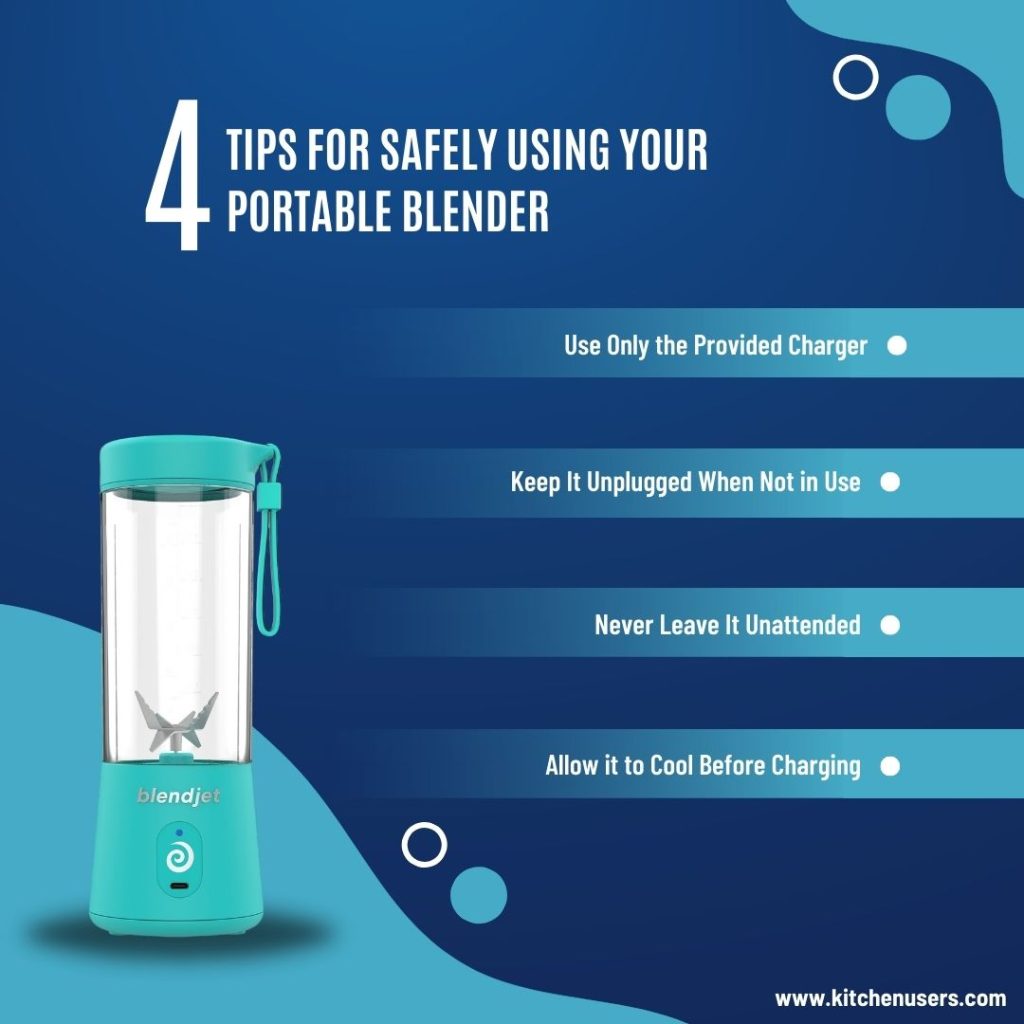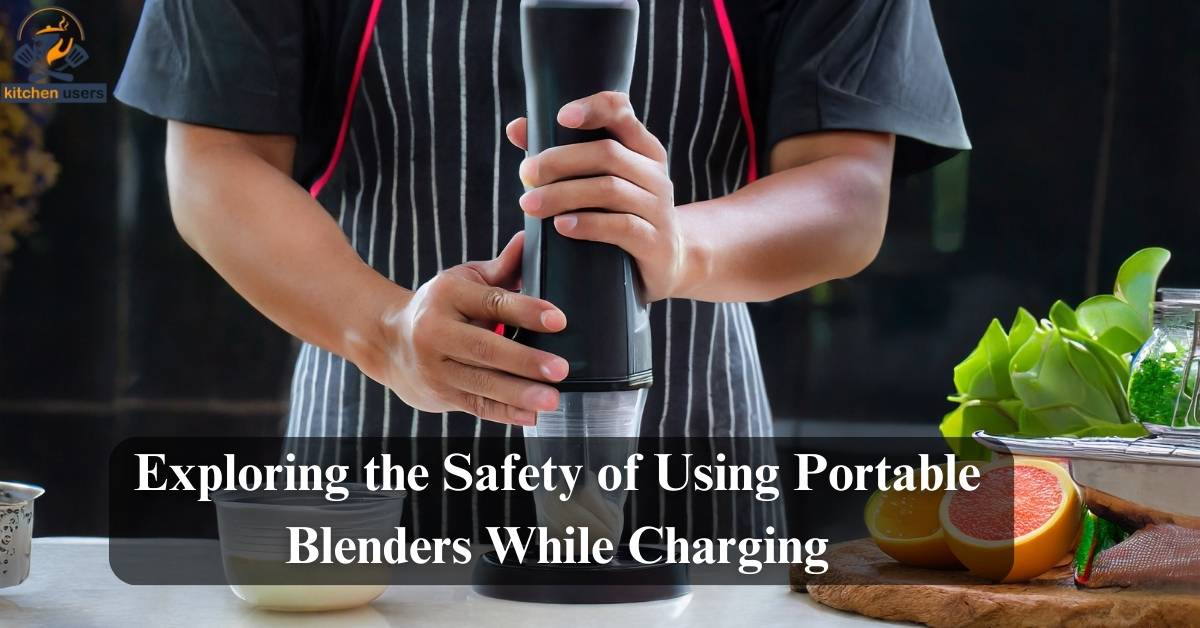As an avid smoothie fan, you likely enjoy the convenience of portable blenders. Blending a refreshing drink anywhere seems appealing. You can do it in your office, at the gym, or in your backyard. However, you may have wondered: is it safe to use a portable blender while it’s charging? After all, blending requires a high-powered motor. Lithium-ion batteries can overheat if not properly cooled during charging.
Before you continue enjoying smoothies on the go, explore the risks of using a portable blender in charging mode. You owe it to yourself. Determine if it’s worth the risk. In this article, we’ll examine the safety issues involved. We’ll review any documented incidents with popular portable blender brands. We’ll also provide recommendations to help you use your blender safely.
This will apply whether it’s plugged in or not. Your portable blending enjoyment need not be curtailed, but safety must come first. Read on to empower yourself with the facts.
The Risks of Using Portable Blenders While Charging

Charging the battery of a portable blender while the device is in use can pose safety hazards. These hazards should not be ignored. The electrical components required to charge the battery generate heat. This heat can potentially lead to overheating when the blender is running simultaneously.
Overheating poses a risk of fire due to the flammable materials used in many blenders. It may also permanently damage the battery or other electrical components. Pushing them beyond their heat tolerance thresholds. To avoid overheating while charging and using the blender, place it on a heat-resistant surface. Keep it away from flammable objects. However, the safest approach is to avoid using the blender while it is plugged in and charging.
Another risk is electric shock from the blender’s charger or cord. Using a blender increases the chance of damaging or detaching its cord or charger. This could then expose live wires. For safety, unplug the charger from the wall outlet before using the blender.
Using a portable blender while charging also reduces its battery life over time. Repeatedly overheating and overcharging the battery can degrade its capacity and performance. Follow the usage and charging guidelines provided in the blender’s instructions. This will maximize the lifespan of the battery.
In summary, using a portable blender while charging may be convenient. However, it is not worth compromising safety or damaging your device. For the best experience with your portable blender, charge it when it is not in use. By following this best practice, you can confidently make smoothies and other recipes. You will know you are avoiding unnecessary risks.
4 Tips for Safely Using Your Portable Blender

To safely operate your portable blender while charging, follow these tips:
Use Only the Provided Charger
The charger that came with your blender is specifically designed for that model. Using any other charger risks overheating the battery and damaging the blender. Only charge your blender with the included charger to avoid this hazard.
Keep It Unplugged When Not in Use
Even when fully charged, keep your blender unplugged until ready to use. Constant charging or leaving it plugged in can reduce battery life over time. This happens through overheating. Unplug the charger from the wall outlet and your blender when done blending. This will maximize your battery’s lifespan.
Never Leave It Unattended
Do not leave your portable blender unattended while charging or in use. Always remain in the area in case the unit begins to overheat or malfunction. If you notice the blender getting very hot, unplug the charger immediately. Operate blenders on a heat-resistant surface and keep them away from flammable objects for safety.
Allow it to Cool Before Charging
If you have just finished blending, allow the portable blender to cool for at least 30 minutes. Then, plug it in to charge. Charging the blender when the battery is already warm can lead to overheating. This can happen if the battery was recently used. Letting it cool first helps ensure safe charging and longer battery life.
Follow these recommendations for safe charging and use. You can confidently power up your portable blender. But as always, exercise caution and monitor the blender to avoid any issues. Unplug at the first sign of overheating and avoid hazardous misuse. When used properly and responsibly, portable blenders can be a very useful tool.
Answering Common Questions About Safety of Using Portable Blenders
Portable blenders are designed to be convenient. However, using one while it’s charging does come with some safety considerations. Here are the answers to a few common questions about operating a portable blender while charging.
Is It Safe To Use A Portable Blender While It’s Plugged In And Charging?
In general, do not use any electronic device while it is charging. The power required to operate the blender motor can potentially overload the charging circuit. This can lead to overheating, which poses a risk of fire or electric shock. For the safest usage, allow your portable blender to fully charge before operating. Avoid using it while the charger is plugged in. Once charged, the blender can be used cordlessly until the battery needs recharging.
Can I Damage The Portable Blender Battery By Using It During Charging?
Yes, using a portable blender while it’s charging can reduce the overall lifespan of the rechargeable battery. Batteries last longest when charged and discharged at a consistent, steady rate. Using a plugged-in device rapidly drains and recharges the battery. This can stress and deteriorate the battery cells over time. For the best battery life, avoid operating the blender during charging whenever possible.
What Should I Do If My Portable Blender Overheats During Charging?
If your portable blender starts to overheat during charging, immediately unplug it from the power source. Allow all components to cool completely before handling. Do not operate the blender. The occurrence of overheating may indicate a malfunctioning battery or other internal issues. You may need to have the blender serviced by the manufacturer before using it again. For safety, you may choose to replace the unit.
Conclusion
In summary, it appears safe to use a portable blender while charging, if proper precautions are taken. However, it does come with risks that you should be aware of. Follow the usage guidelines in your blender’s instruction manual. Ensure the cord is not damaged or frayed. Keep the blender on a heat-resistant surface away from water. Avoid overloading the blender motor. Doing these things can minimize the chances of overheating or electrical issues.
However, there is always a small risk of fire or electric shock. This risk becomes more significant if there are undisclosed problems with your device. For the safest approach, it is best to avoid using your portable blender while charging. Whenever possible, avoid using it. Your safety is the top priority. Take the time to understand how to properly operate your portable blender. Use caution.

Tammy E. Edison is a distinguished specialist in the world of kitchen appliances, and she is proud to be a part of the dynamic team at kitchenusers.com. With a background in engineering and a passion for culinary innovation, Tammy E. Edison has established herself as a go-to expert for all things related to kitchen appliances technology.


